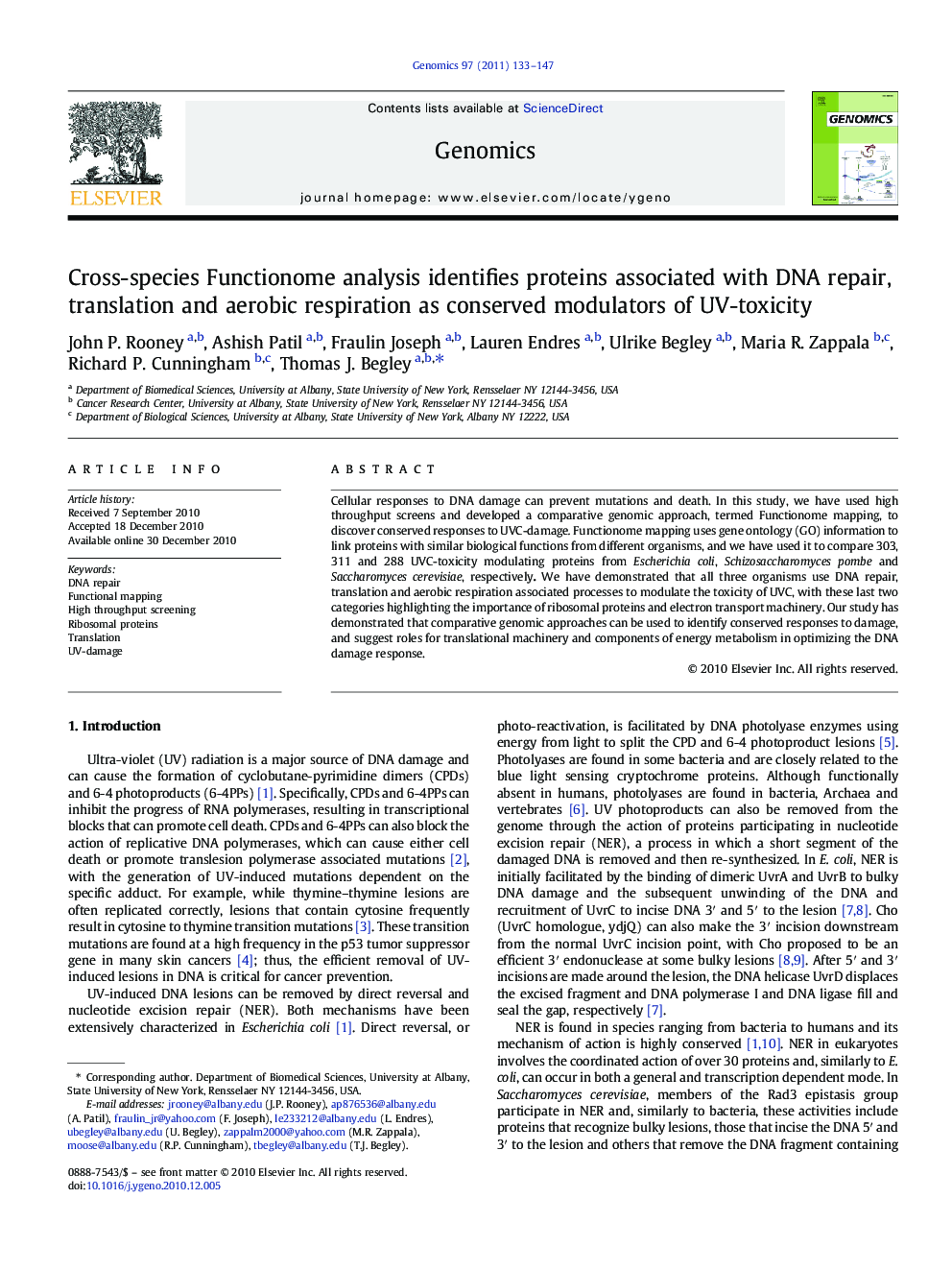| Article ID | Journal | Published Year | Pages | File Type |
|---|---|---|---|---|
| 2820887 | Genomics | 2011 | 15 Pages |
Cellular responses to DNA damage can prevent mutations and death. In this study, we have used high throughput screens and developed a comparative genomic approach, termed Functionome mapping, to discover conserved responses to UVC-damage. Functionome mapping uses gene ontology (GO) information to link proteins with similar biological functions from different organisms, and we have used it to compare 303, 311 and 288 UVC-toxicity modulating proteins from Escherichia coli, Schizosaccharomyces pombe and Saccharomyces cerevisiae, respectively. We have demonstrated that all three organisms use DNA repair, translation and aerobic respiration associated processes to modulate the toxicity of UVC, with these last two categories highlighting the importance of ribosomal proteins and electron transport machinery. Our study has demonstrated that comparative genomic approaches can be used to identify conserved responses to damage, and suggest roles for translational machinery and components of energy metabolism in optimizing the DNA damage response.
